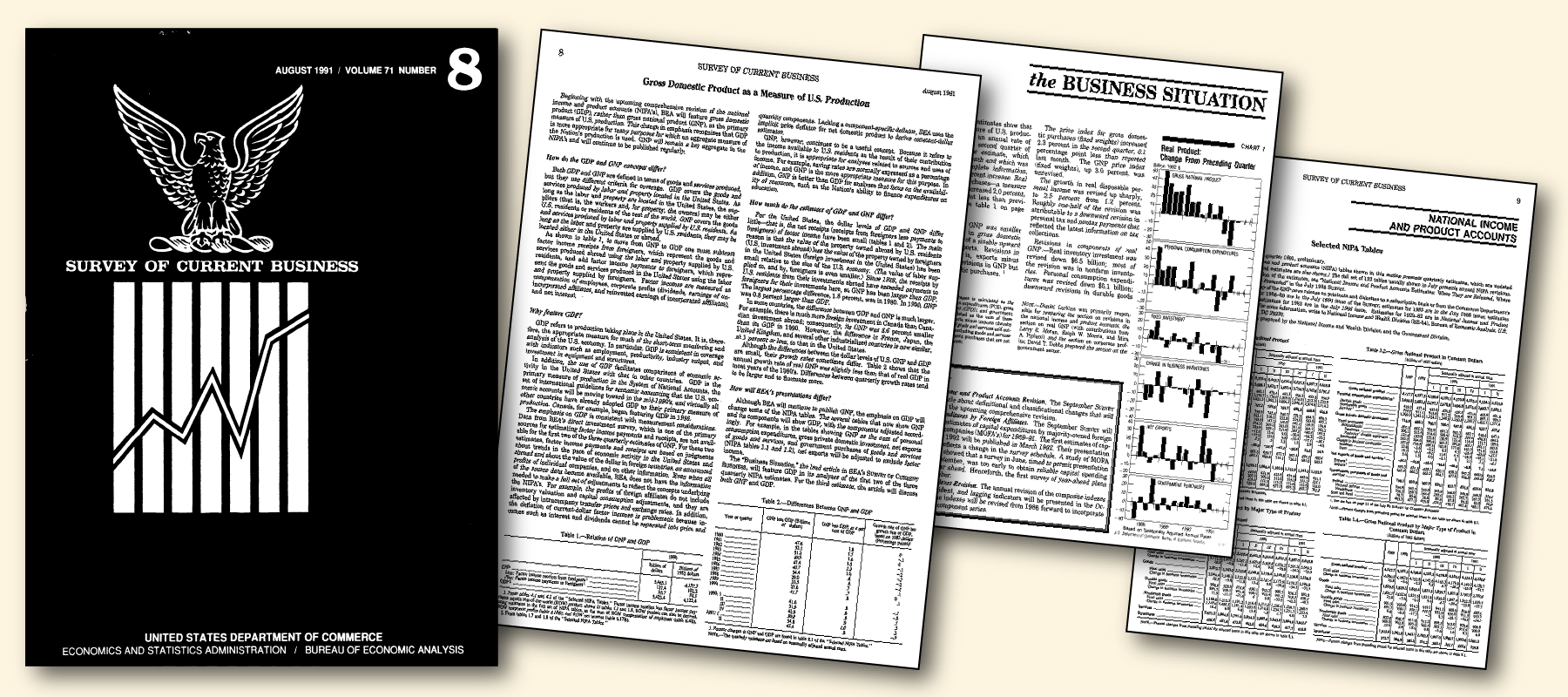The Changeover from GNP to GDP
A Milestone in BEA History
Beginning with the comprehensive update of the National Income and Product Accounts (NIPAs) in November 1991, the Bureau of Economic Analysis began releasing estimates of gross domestic product (GDP) as its featured measure of U.S. production, rather than gross national product (GNP), the measure in use since 1934. The August 1991 Survey of Current Business article, “Gross Domestic Product as a Measure of U.S. Production,” introduced the new featured measure as well as the changes from GNP to GDP.
Although both GDP and GNP conceptually represent the total market value of all goods and services produced over a defined period, there are differences between how each defines the scope of the economy. GDP measures the goods and services produced within the country's geographical borders, by both U.S. residents and residents of the rest of the world. GNP measures the goods and services produced by only U.S. residents, both domestically and abroad.
The change from GNP to GDP reflected a more appropriate measure for U.S. aggregate production, particularly in short-term monitoring and analysis of the economy. Moving towards this as the primary measure of production was advantageous for several reasons. GDP was the primary measure of production in the System of National Accounts, the set of international guidelines for economic accounting. Many other countries had adopted GDP as their featured measure, allowing for reliability in comparisons of economic activity across countries. It was also consistent in coverage with other economic indicators such as employment and productivity. Additionally, issues with underlying source data for certain income estimates provided challenges in measuring GNP. However, GNP continues to be a relevant and key aggregate, proving particularly useful for analyses related to sources and uses of income.
For more on the changeover from GNP to GDP, we present a reprint of the August 1991 Survey article on the topic.
